 |
|
 |
 |
 |
 |
 |
 |
 |
 |
Japanese Buddhist Art
The introduction of Buddhism to Japan was one of the most important events in Japanese history and had a lasting effect on the development of the country's thought, art and culture. Today, Buddhism is the dominant religion in Japan. According to Japanese sources, Buddhism was introduced from the Korean kingdom of Paekche in either 538 or 552 as part of a series of diplomatic exchanges that also led to a broader awareness of the beliefs and material culture of China and Korea. Further exchanges during the 6th and 7th centuries brought not only a religion but also a writing system (using Chinese characters), a refined material culture, and a highly sophisticated governmental structure. As Buddhism prospered in Japan, the arts also flourished. By the 7th century, when the religion was firmly established, Japan had temple complexes, various orders of priests and nuns, and a body of skilled artisans who made the icons and other accoutrements of faith. Japanese Buddhist art in the Asia Society's collection dates from the 8th to the 14th century and includes examples of clay, bronze, and wood sculpture as well as a number of hanging scrolls. |
 |
 |
| 1 thru 11 of 11 |
 |
| view text only list |
 |
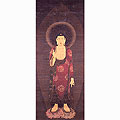
Amida Raigo |
 |

Kneeling Woman |
 |
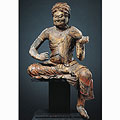
Fudo Myo-o |
 |
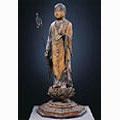
Jizo Bosatsu |
 |

Male Figure |
 |

Amida Nyorai |
 |
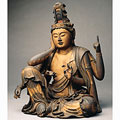
Nyoirin Kannon |
 |

Two Lion-Dogs |
 |

Dainichi Nyorai |
 |

Fudo Myo-o |
 |
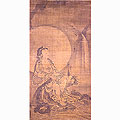
White-robed Kannon |
 |
|
 |